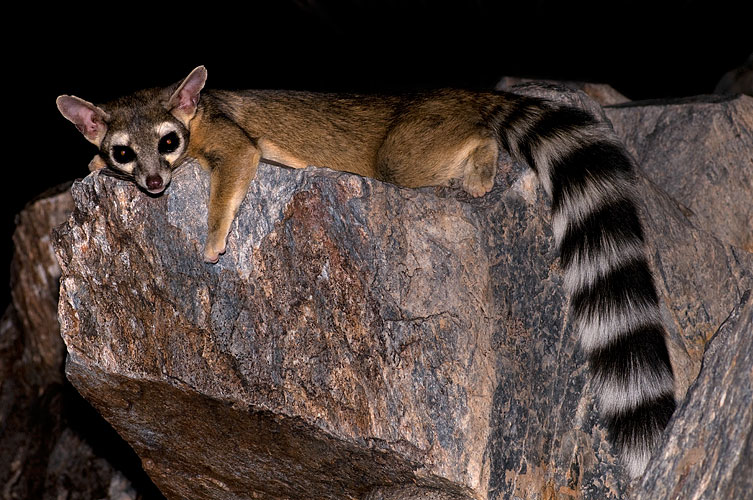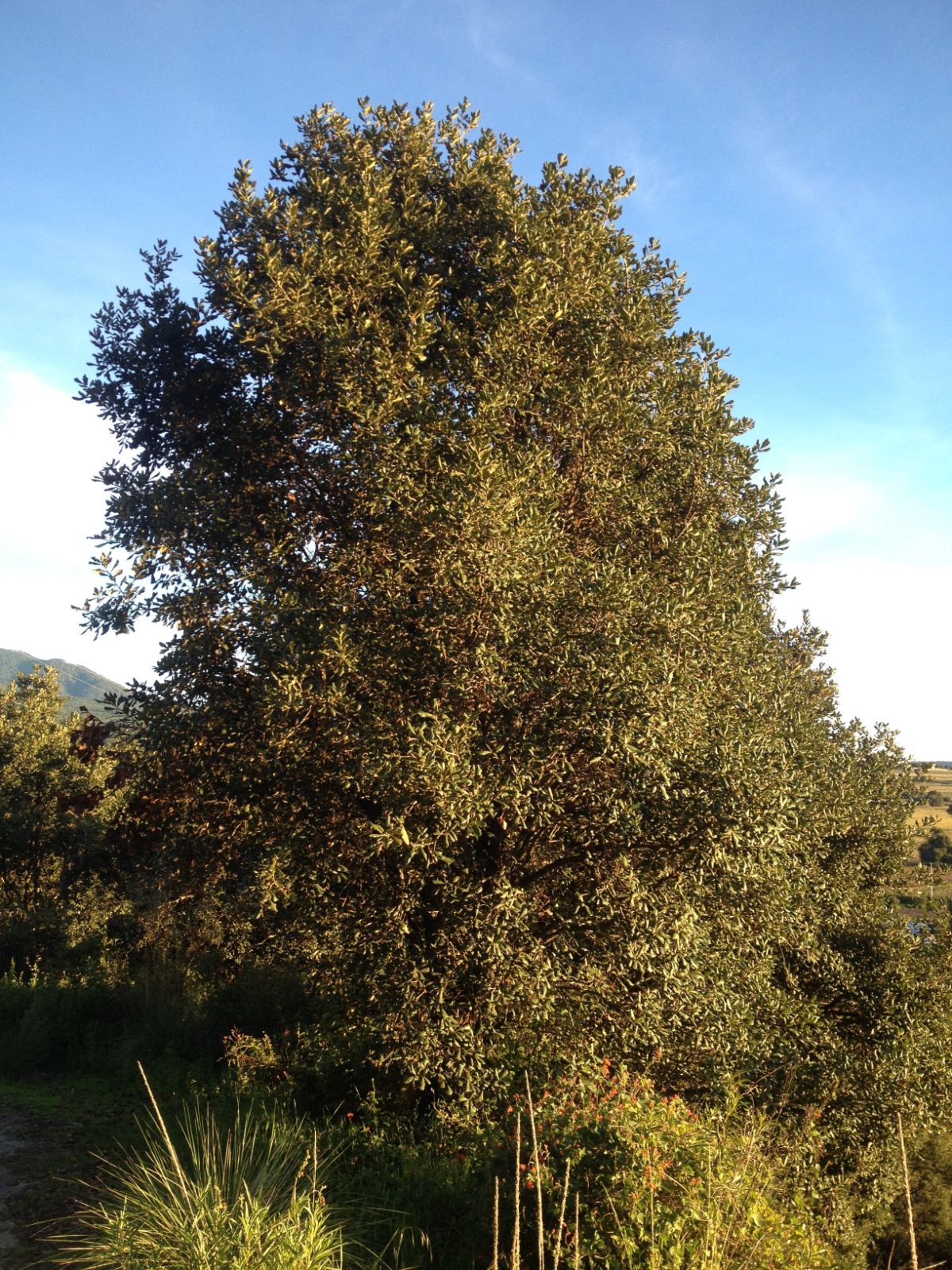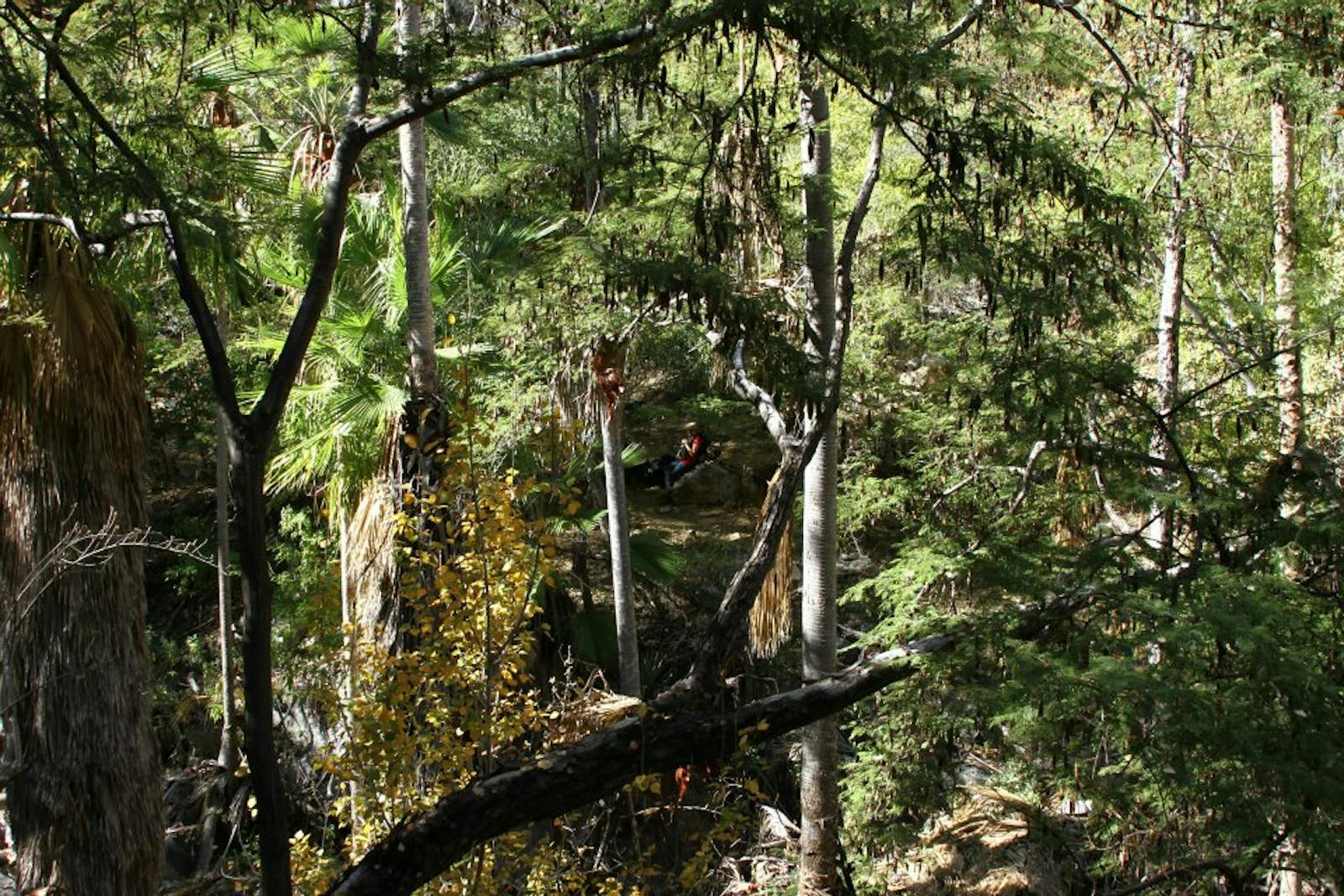Sierra de la Laguna Pine-Oak Forests
The ecoregion’s land area is provided in units of 1,000 hectares. The protection goal is the Global Safety Net (GSN1) area for the given ecoregion. The protection level indicates the percentage of the GSN goal that is currently protected on a scale of 0-10.
Bioregion: Mexican Dry & Coniferous Forests (NT28)
Realm: Central America
Ecoregion Size (1000 ha):
107
Ecoregion ID:
556
Conservation Target:
98%
Protection Level:
6
States: Mexico
Commonly found in Sierra de la Laguna Pine-Oak Forests ecoregion, the ringtail, also known as ring-tailed cat or miners’ cat, is a member of the racoon family and not a cat at all. Their namesake stems from their distinctive bushy black and white ringed tail, on an otherwise sleek and muscular body. They are great climbers and can be partly arboreal in appropriate habitat, but generally also tend to prefer habitat with rocks, arroyos, trees or some “structure’.
They are nocturnal feeding on fruits, insects, and birds as they climb branches, over cactus and through crevasses in nearly constant pursuit of food. Although ringtails occur in deserts and mixed forests, they prefer to live among pine-oak forests due to tree cover and prey availability.

The flagship species of the Sierra de la Laguna Pine-Oak Forests ecoregion is the ring-tailed cat. Image credit: Creative Commons
This ecoregion is contained in a larger area known as the Cape Region and constitutes the southernmost part of the Baja California Peninsula. Millions of years ago this region was an island before re-joining the mainland. The mountainous Sierra de la Laguna Pine-Oak Forests rose from the arid Baja California Sur, creating islands of vegetation and unique communities dispersed throughout various canyons, ridges, and plateaus.
The climate is temperate subhumid with summer and occasional winter rains. These forests are the wettest within the state of Baja California Sur, reaching mean annual precipitation of 760 mm. The highest strata of mountains (1,600–2,000m) are composed of pine-oak forests dominated by Pinus lagunae, Quercus devia, Arbutus peninsularis, and Quercus tuberculate. Oak trees have a stronger presence in the lower elevation, especially Arizona white oak.

Netleaf oak. Image credit: Creative Commons
The past and present isolation of Sierra de la Laguna from the rest of the peninsula has played a major role in producing an extraordinary array of unique species. These pine-oak forests are the only temperate forests within Baja California Sur. There are some 694 plant species, approximately 85 of which are endemic to this ecoregion. There are 108 species of arthropods, 2 amphibian, 27 reptile, 74 birds and 30 mammal species reported.
Notable reptiles include desert night lizard and southern alligator lizard. Restricted range birds include Xantus's hummingbird and Belding's yellowthroat. Other notables include cape pygmy owl, white-winged dove, and golden eagle. The isolation of this region has contributed to the scarcity of predators, and many native animals are free of competition and predation; rodents and lagomorphs are virtually absent from the region.

Arizona white oak. Image credit: Homer Edward Price, Creative Commons
Portions of the ecoregion still remain intact. However, the more accessible areas are being converted for cattle grazing. The region was established as a Protected Natural Area with pine-oak forests and subtropical dry forest as the key areas for protection. Enforcement beyond formal protection is necessary to diminish resource extraction and habitat loss as human activities encroach over the coming years.
Although human disturbance in Sierra de la Laguna has been kept to a minimum, any uncontrolled perturbation to this fragile ecosystem could create an imbalance. Local conversion of land for cattle pasture coupled with hunting of the native fauna are ongoing issues but have not reached a tipping point. The area continues to experience development and an increase in tourism.
The priority conservation actions for the next decade will be to: 1) ensure proper management of protected areas and resources; 2) incentivize locals to protect their biodiversity with educational outreach; and 3) restrict and manage the burgeoning tourism industry over the coming years to minimize impact to natural habitats.

Beargrass. Image credit: Creative Commons
Citations
1. Valero, A. Schipper, J. Allnutt, T. Burdette, C. 2019. Southern North America: Southern tip of Baja California in western Mexico https://www.worldwildlife.org/ecoregions/nt0307 Accessed June 26, 2019
2. Rzedowski, J. 1988. Vegetación de México. Editorial Limusa, México. 431 pp.
3. Challenger, A. 1998. Utilización y conservación de los ecosistemas terrestres de México. Pasado, presente y futuro. Conabio, IBUNAM y Agrupación Sierra Madre, México.



